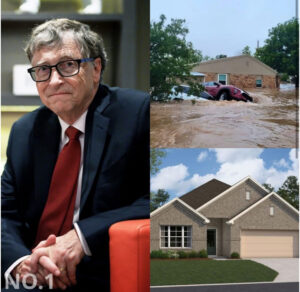When floodwaters rose without mercy in Texas, drowning entire neighborhoods, sweeping away lives, homes, and hope, the world watched in disbelief. More than 82 lives were lost—including dozens of children—as rivers overflowed and flash floods tore through cities and towns. The devastation was widespread, the grief uncontainable.
But amid the sorrow and chaos, one figure emerged with a gesture so massive, so life-changing, that it stunned even the most hardened skeptics. Bill Gates, often known for his quiet but impactful philanthropy, stepped forward with a decision that will forever be remembered in the annals of disaster relief.
He committed an extraordinary $200 million of his own wealth to build new homes for the survivors of what is now considered the worst flood disaster in Texas history. And just like that, when faith was wavering and despair ran high, thousands of broken families saw a flicker of light on the horizon.
Gates did not announce this move with fanfare or press conferences. There were no cameras capturing his signature or a ceremonial check presentation. The announcement came quietly through the Bill & Melinda Gates Foundation’s disaster response team, and within hours, logistics teams had already landed in the most devastated areas—Houston, Wimberley, and smaller towns nearly erased by the water.
The plan was not just to provide temporary shelter, but to fund the construction of over 3,000 permanent, climate-resilient homes designed specifically to withstand future natural disasters. This wasn’t a band-aid for disaster; it was an audacious promise of long-term recovery. A promise that families would not only be safe again—but have a chance at living better than before.
